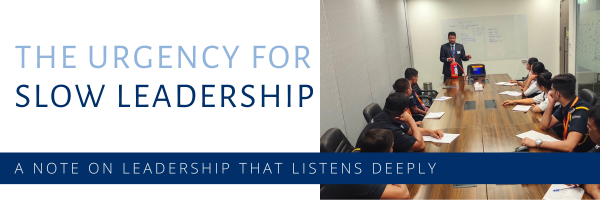
We live in a time when the world has made it almost impossible to slow down. It has made it difficult to say no to the trends that change every other second. It has fashioned itself in a way that demands quickness as a survival tool – almost pushing us back to the beginning of civilization. This urgency is taxing our nervous system, and thus our immune system as well. We have become more successful (probably more wealthier) and more impactful in our work, but this sense of urgency that has been weaved into the fabric of our lives warrants a reimagination of what success means to us going ahead. It is indeed time for an inner audit.
How do we not burn – out?
There is a beautiful quote by Warren Buffett, the Chairman and CEO of Berkshire Hathaway, which goes: “The difference between successful people and very successful people is that very successful people say ‘no’ to almost everything.” As surprising as it sounds, perhaps the answers to what we seek in leadership, development, and even climate crisis are probably more no’s. Only when we say ‘no’ to what is not needed can we bring focus and reallocate our energies into what truly matters – and the only way to prevent a burnout, whether you are a leader or otherwise, is in being clear about our priorities that are designed for a more sustainable future for all of us.
What is Slow Leadership?
Imagine a workplace where leaders are not just taskmasters but mentors, who take the time to nurture the potential within their teams. They emphasise on the importance of genuine connections, fostering a culture where individuals feel seen, heard, and valued. Slow leadership offers space for this – it is a departure from the impersonal speed at which many organisations operate. It is about actively working to usher in a sense of community and shared purpose.
This approach to decision-making also challenges the myth that faster is always better. It reminds us that efficiency should not come at the cost of well-being. Slow leadership recognizes the significance of work-life balance, understanding that sustainable success is built on a foundation of holistic wellbeing of everyone in the team.
How to move towards it?
There is an urgency for slowing down today as the world battles a pandemic of mental health crises- one that not only asks us what difference can we make in our personal lives but also in the lives of the people we work with. But how do we implement mindfulness at our workplaces when our deadlines are stricter?
At an organisational level, what allows us room for slow leadership is strategic planning. Our activities and job roles are strategically designed to prevent burnout and confusion that could lead to mismanagement of resources. We also ensure that we find space in our work environment for meaningful conversations that promote understanding and connection, rather than rushing through routine updates.
At Stalwart we also prioritise the wellbeing of our team through initiatives that support mental and physical health. This fosters the spirit of critical reflection in our employees to evaluate what works for them and what doesn’t. When an employee develops ownership towards their work, it lays the foundation of a sustainable workforce. By incorporating virtues of slow leadership, we have discovered the power of thoughtful leadership, which paves the way for enduring achievements and a more fulfilling professional journey.
